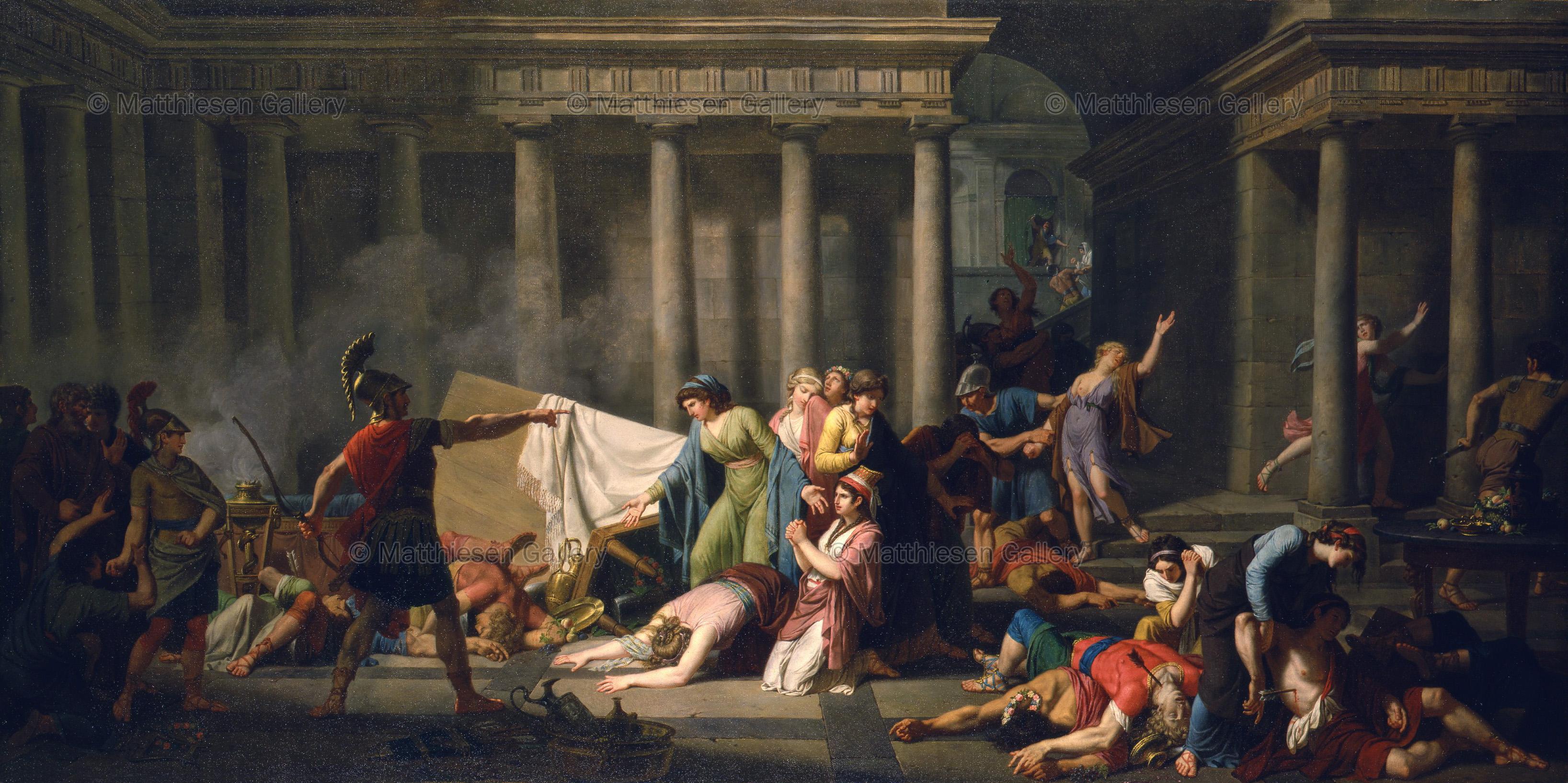Ulysses Returning to his Palace after Slaying the Lovers of Penelope, Ordering the Women to Remove their Bodies(Nicolas-André Monsiau)
Our painting may be most immediately compared in size and format with David’s Death of Patroclus (see Fig. 2), with which Monsiau would have been thoroughly familiar as it was painted in Rome when both artists were students there. Completed in 1779, the painting was shown at the Salon of 1781, and is of similar dimensions (37 x 86 inches; 94 x 218 cm). David, however, has not yet adopted the Neo-classical froideur that characterised his later painting and which is clearly apparent in our Ulysses. Both paintings, though, share a frieze-like composition, with the principal protagonists placed off-centre, indicating in one case the body of Patroclus and in the other the weeping Penelope, with the figures of the living and dead strewn on either side. Monsiau has placed his group in front of an austere, classical façade. The central group is illuminated by a sharp light which casts the shadows of the pillars against the inner wall of the Palace and highlights the left arm, shoulder and plumed helmet of Ulysses. The figures on either side, in contrast, are in partial shadow, emphasising the drama of the central scene.
Matthiesen & Stair Sainty Matthiesen, Collectanea 1700-1800, London-New York, 1999, pp. 209-211, ill.
EXHIBITED: Paris, Salon, 1791, no.13 (no. l56 Livret de lAcadémie).
ENGRAVED: Pietro Antonio Martini (1739-1797).

